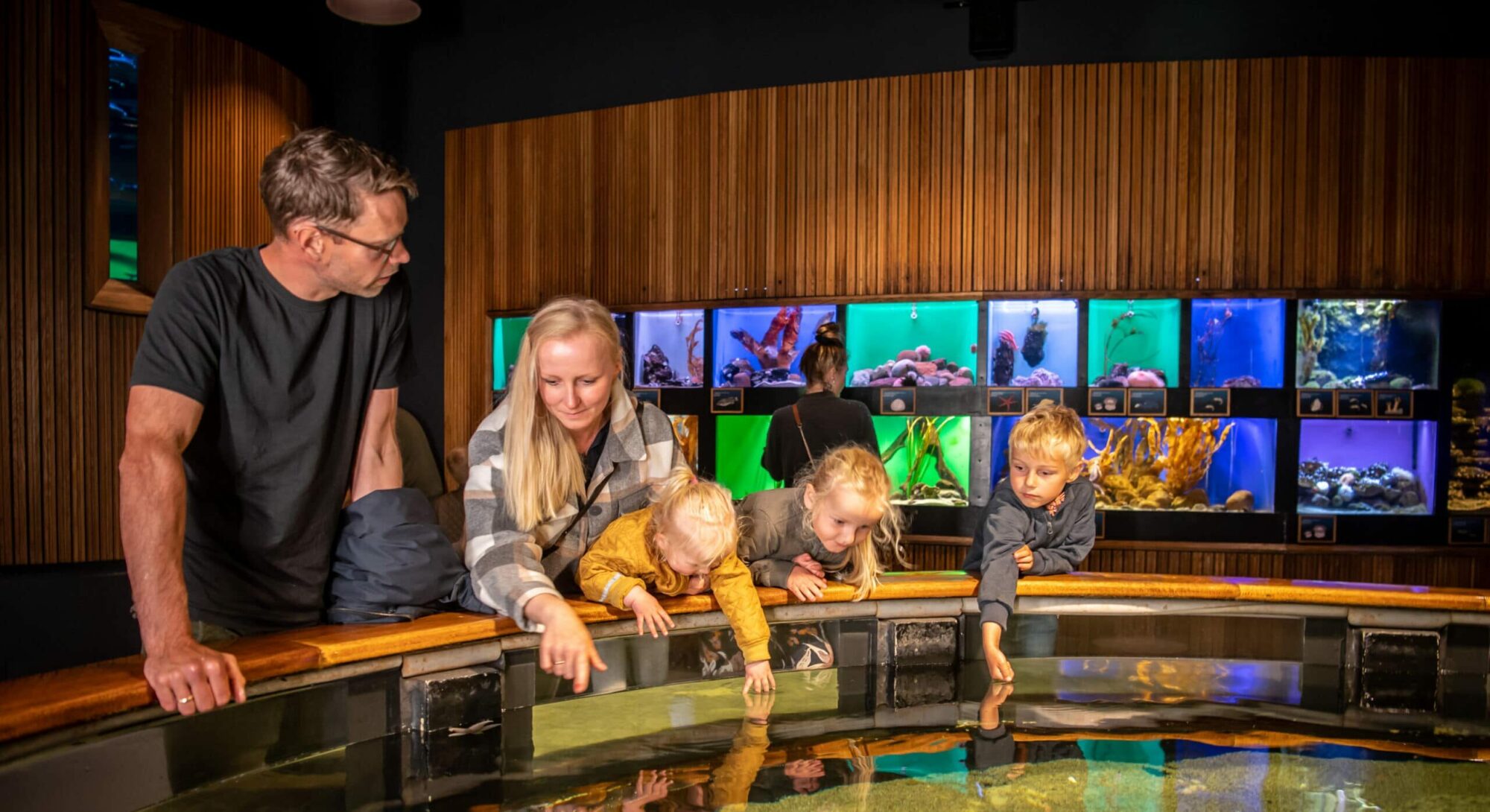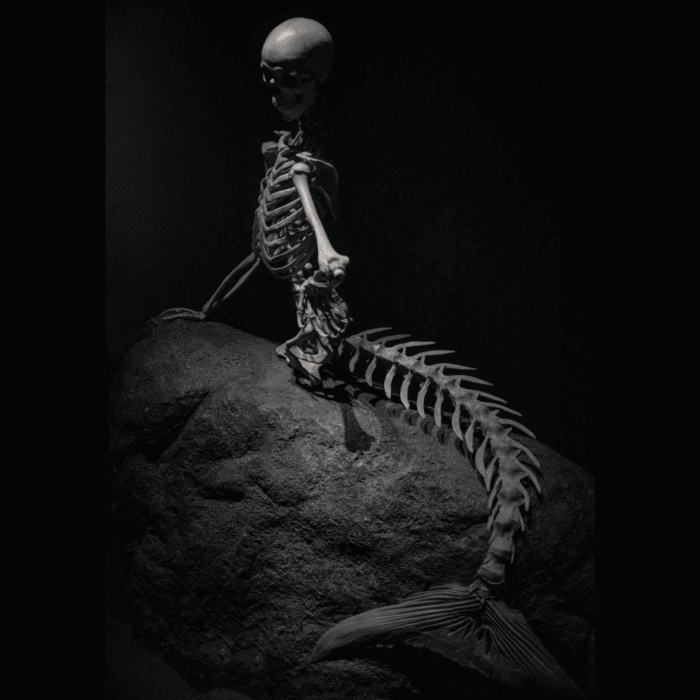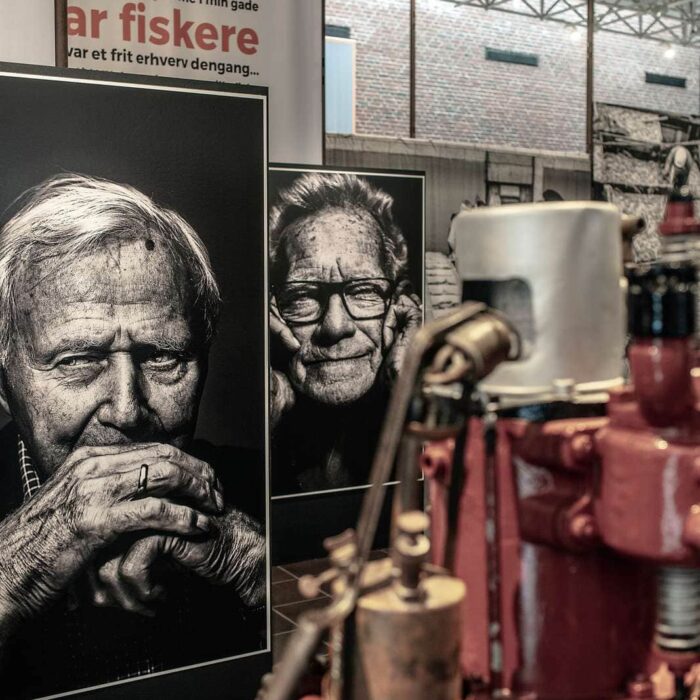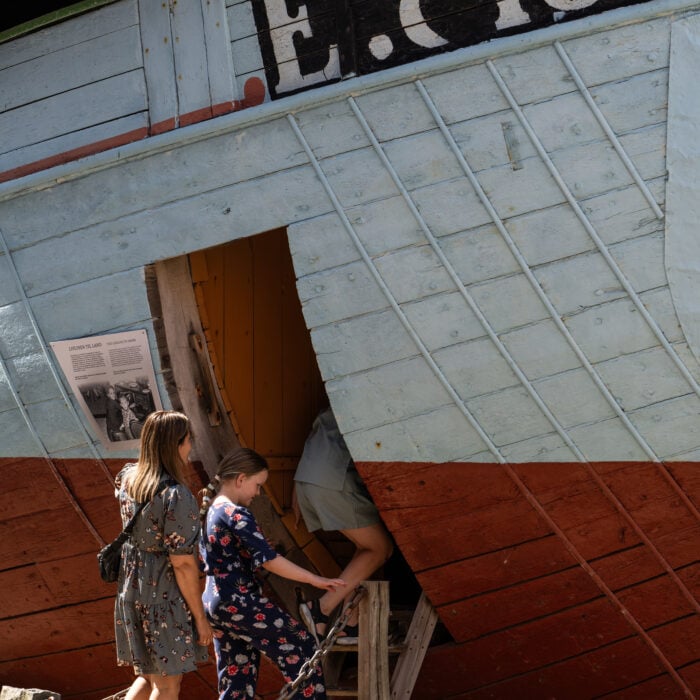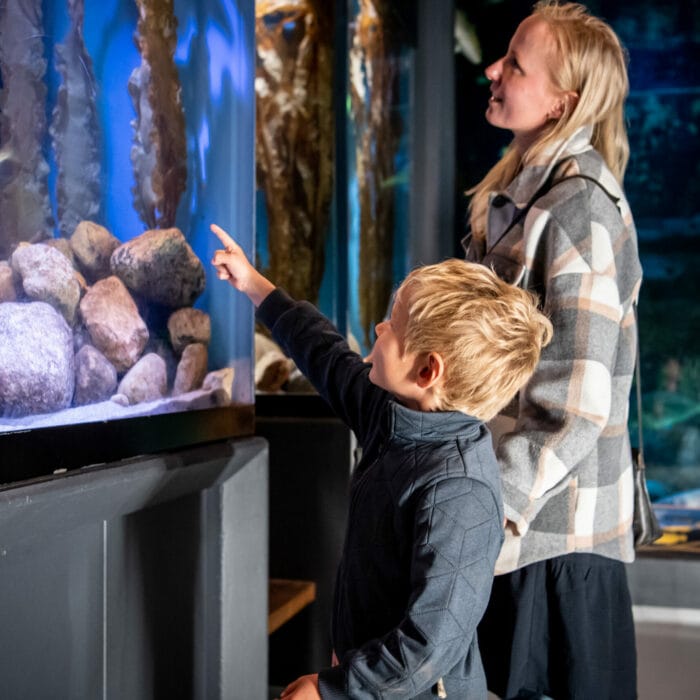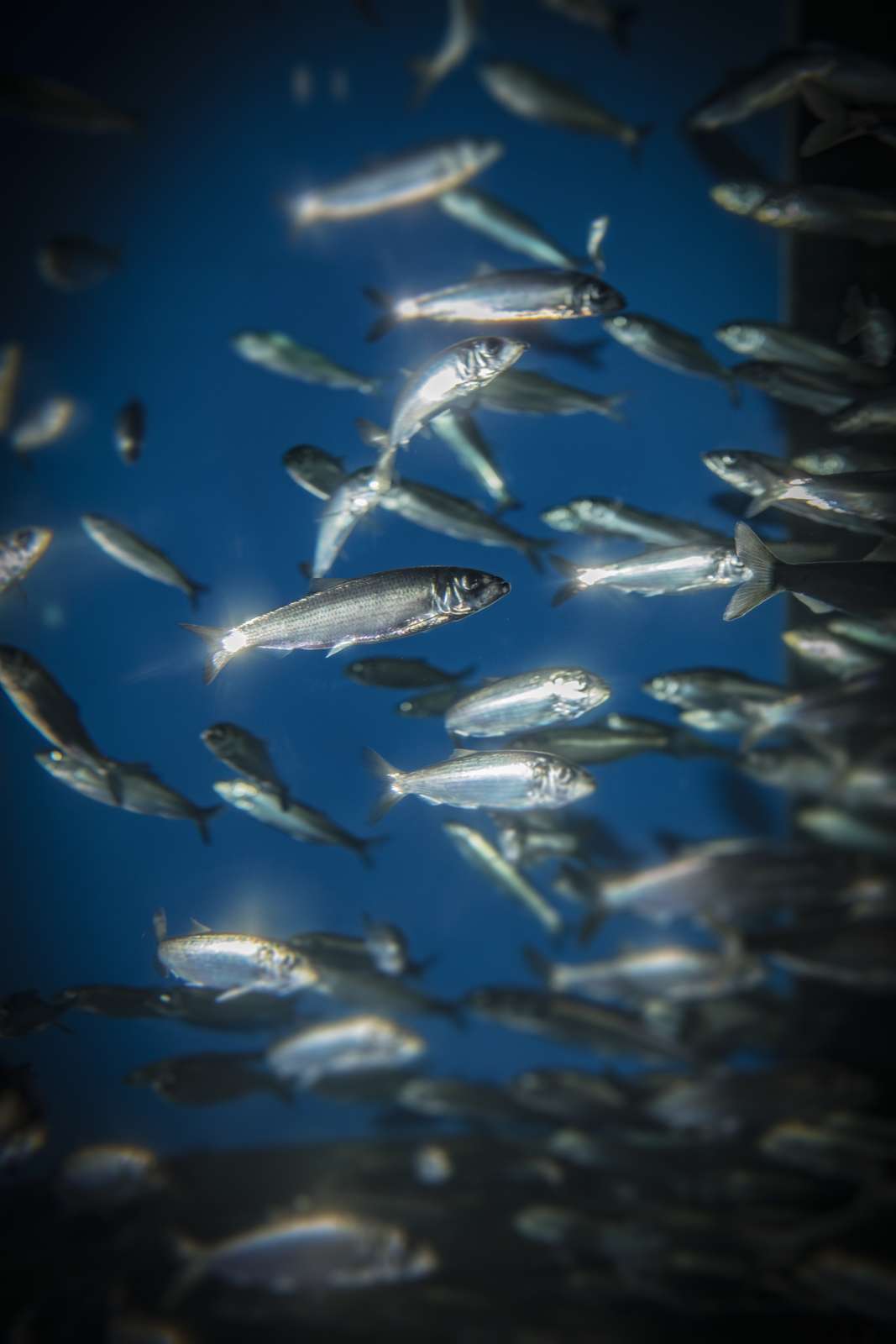
Aquarium
Go beneath
the surface
Dive into the saltwater aquarium
Do you dare to touch a lessor dotted dogfish? In Denmark's most beautiful touch pool, you can test your courage. In the aquarium, you'll also encounter other Danish fish such as thornback rays, turbot, conger eels, and the giant cod that can grow up to two meters long. In other words, you get a unique insight into life beneath the sea's surface!
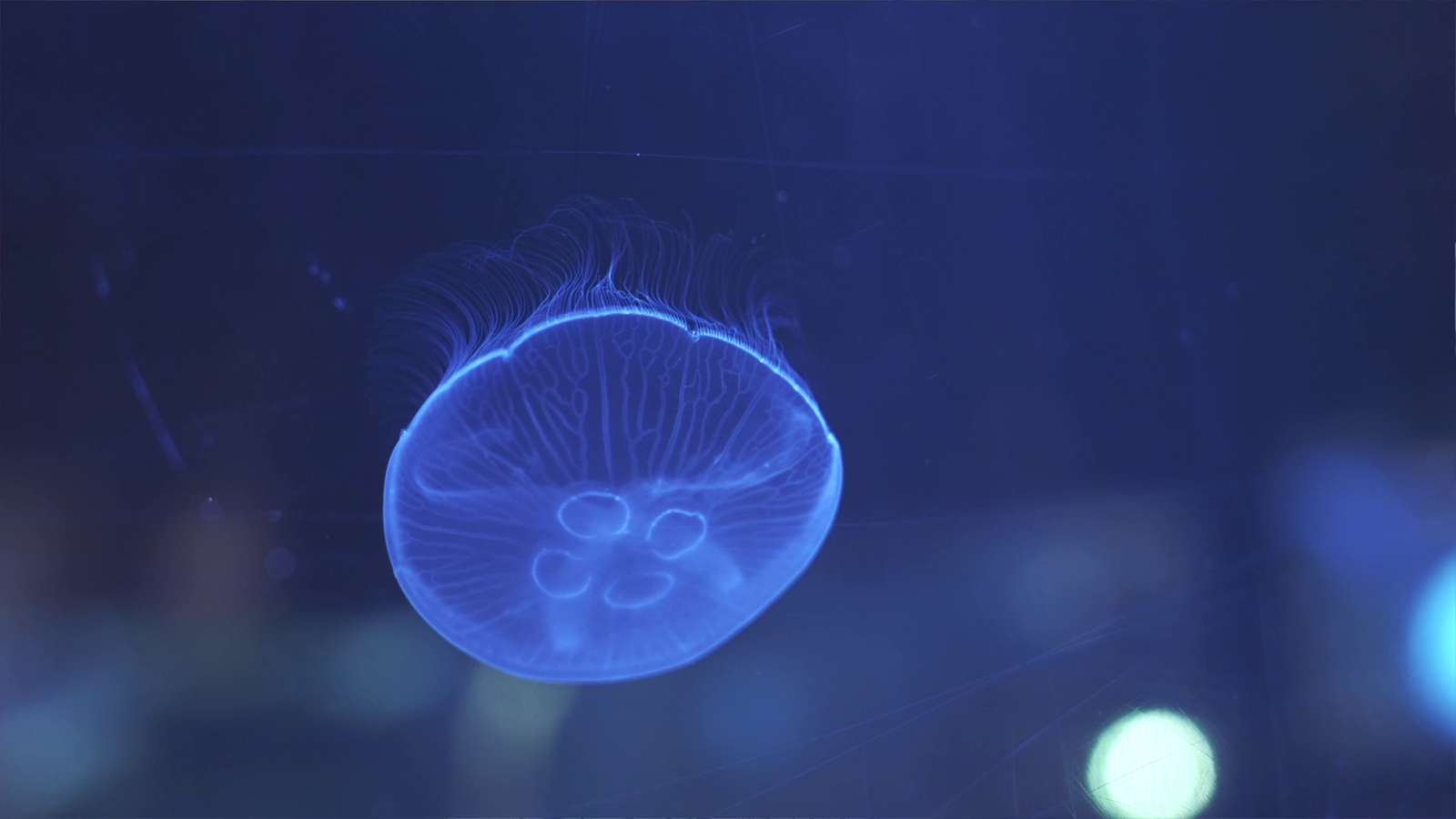
Get up close to the species
Dive into a world of fish when you visit our saltwater aquarium and learn more about the fascinating life beneath the sea's surface. You can touch fish, starfish, and sharks, and observe beautiful sea anemones and strange jellyfish in the aquarium. Finish off by seeing if you're as tall as some of the largest fish in Denmark.
The fascinating life of the sea
